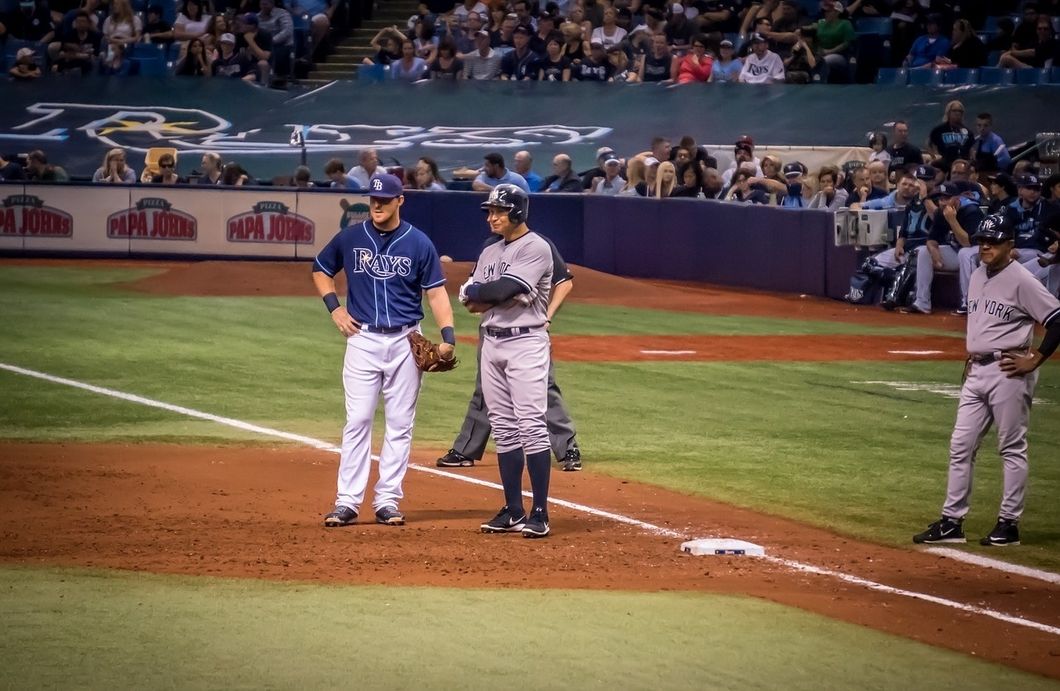My original article focused on the simultaneously swelling of both home-run and strikeout numbers in professional baseball. I mostly referenced the 2017 season, which witnessed an onslaught of 6,105 home runs and 40,105 strikeouts- both record-breaking- and analyzed the statistics of some of the biggest stars in baseball right now like Aaron Judge and Giancarlo Stanton to demonstrate how the trend of 'swinging for the fences' is actually leading to less exciting offensive game. We're now at the mid-way point of the season and it's no coincidence that the league is on pace to end the year with more strikeouts than hits for the first time in MLB history.
There are 234 more strikeouts (24,537) than hits (24,314) across all organizations thus far, paired with the highest strikeout per game ratio in majors history (8.51 per game). This year, even the league-wide batting average dropped off significantly, sitting at a lowly .247, the lowest since 'The Year of the Pitcher' in 1968 (which was the last season before all mounds were officially lowered from 15 inches to 10 inches). Not a single franchise has a team batting average over .275 (the Red Sox, who are 38 games above .500, lead the league with .272) The league's first-half-of-the-season batting average is declining steadily, from .257 in 2016, to .255 in 2017, and now .247 this year. Players seem to be having a hard time getting on base. 98 different players recorded games with four or more strikeouts (129 times in total). Joey Gallo and my poster-child for this phenomenon, Aaron Judge, lead the league with 132 strikeouts each, out of 316 and 351 at-bats respectively. This same time last season, Judge had 109 and Miguel Sano led the league with 120 strikeouts.
Now, I would be remiss to ignore the power numbers coming out of these hitters in the same conversation as their strikeouts. 63 different players have sent 15 or more balls into the stands, and 20 have at least 20 homers to their name. JD Martinez and Jose Ramirez lead with 29, while Trout, Judge, and Lindor are all close behind with 25 each. 3283 bombs were blasted in the first half of the 2018 season (which is actually less than this time last year (3343)). This year's MLB All-Star Game saw a record-breaking 10 dingers in the AL's sixth straight win. The next closest all-star game to meet those standards was in 1933 with 6 HRs that night. Those 10 home-runs were matched with a ridiculous 25 strikeouts, (Scherzer and Sale combined for 15 of those in 4.5 innings) epitomizing the state of baseball today and for the foreseeable future.
Notably, there's been a 6.6% drop in attendance from 2017 to this season thus far, and a nearly 9% decline overall (Kessler). If you watched almost any game on TV (barring many division rival match-ups) you probably noticed within the first or second camera-pan that stadiums seem unusually empty. The MLB is projected to have its first season since 2003 with an average attendance below 30,000. The last time the league experienced a drop-off like this was 1995 following the cancellation of the 1994 World Series due to a player-strike. There are many theories as to why baseball is taking such a hit in ratings and ticket sales, including bad weather, too many games in a season, or the growing gap between the best teams and worst teams of the sport. The Red Sox, Yankees, Astros, and Mariners are ahead of the pack, all on pace to set records for win totals in the MLB; while the Orioles (who maintain a league-low batting average of .227), Royals, White Sox, Reds, Marlins, and Rangers are all well under .400. The Red Sox, who experienced the smallest decrease in attendance and viewer ratings out of all other franchises, lead the league in AVG, OPS, RBIs, hits, doubles, runs, and XBHs. They do not, however, lead in home runs, triples, or slugging percentage, and most importantly: they are ranked 26th out of 30 teams for most strikeouts. Coincidence? Probably not.
With attendance down and strikeouts up (despite paralleling consistent homer numbers), teams are going to have to start making changes. Carson Kessler, who writes for Fortune.com, released an article in June in which she calculated that "based on annual league-wide attendance rates, the 2,430 games played each season, and an average price of $76 per ticket — [this drop in numbers] estimates a loss of nearly $355 million on ticket sales alone," (Kessler). Yes, we get that fans love home-runs, but they also want action. One of baseball's most common critiques is that the long games are 'boring', and almost 1/4 of all at-bats ending with the player taking a seat on the bench (and not with a smile on his face) isn't going to help that. Pitchers are throwing harder (49 pitches exceeded 102.5 MPH so far) and more effectively. 6 no-hitters have been thrown so far, 3 coming within the first 6 weeks. The most no-hitters thrown in a single season in MLB history since its definition change in 1991 is 8. However, as pitchers improve, there's no reason why batters can't adjust as well. Putting the ball in play more and opting for line drives over moon-shots, would not only give the defense more opportunities to make plays (which adds to the sport's excitement factor), but also potentially help team's batting averages, runs, and strikeout numbers. It'll be interesting to see how players adjust following the All-Star Break, and if these statistics continue to form a noticeable pattern throughout the rest of the year and many seasons to come.








 StableDiffusion
StableDiffusion StableDiffusion
StableDiffusion StableDiffusion
StableDiffusion Photo by
Photo by  Photo by
Photo by  Photo by
Photo by 
 Photo by
Photo by  Photo by
Photo by  Photo by
Photo by  Photo by
Photo by  Photo by
Photo by 











